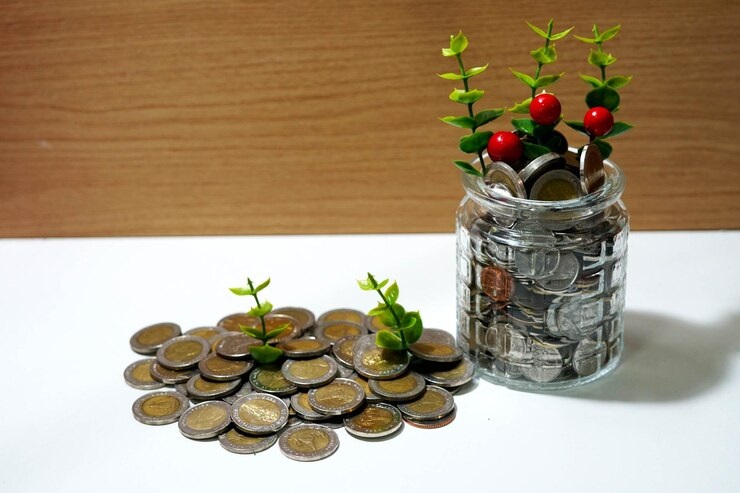Fixed Deposits (FDs) have long been a favoured savings tool among Indian investors due to their safety and guaranteed returns. However, one critical factor that significantly influences the returns on FDs is the interest rate. Understanding how changes in interest rates impact FDs can help investors make informed decisions. Here’s a look at the various aspects of how interest rate fluctuations affect Fixed Deposits, including the factors that drive these changes, and tips for investors.
Understanding Interest Rates
Interest rates on FDs are influenced by a variety of economic factors, including the Reserve Bank of India’s (RBI) monetary policy, inflation rates, and overall economic conditions. The RBI makes adjustments to the repo rate, i.e. the rate at which it lends to commercial banks, to control inflation and stabilise the economy. When the RBI changes the repo rate, it indirectly affects the interest rates offered by banks and non-banking financial companies (NBFCs) on FDs.
Factors Influencing Interest Rate Changes
- RBI’s Monetary Policy: The RBI uses monetary policy to control money supply and inflation in the economy. An increase in the repo rate generally leads to higher fixed deposit interest rates, while a decrease results in lower rates.
- Inflation: High inflation erodes the purchasing power of money. To combat this, the RBI may increase interest rates to curb spending and bring inflation under control.
- Economic Growth: During periods of strong economic growth, demand for credit increases, leading to higher interest rates. Conversely, in a sluggish economy, the RBI may reduce rates to stimulate borrowing and investment.
- Global Economic Conditions: Global interest rates and economic conditions can also influence domestic interest rates. For instance, if global interest rates rise, Indian rates may follow suit to attract foreign investment.
Impact on Fixed Deposits
Changes in interest rates can have a significant impact on the returns from FDs. Here’s how different scenarios play out:
- Rising Interest Rates:
-
- New FDs: When interest rates rise, new FDs may come with higher returns. Investors looking to open a new FD during this period can benefit from these higher rates.
- Existing FDs: For existing FDs, the interest rate remains unchanged for the duration of the tenor. This means that investors with existing FDs may miss out on the opportunity to earn higher returns available in the market.
- Falling Interest Rates:
- New FDs: When interest rates fall, new FDs will offer lower returns. Investors may find it less attractive to invest in FDs during such times.
- Existing FDs: Investors with existing FDs benefit as their returns are locked in at the higher rates before the decline. This makes FDs an attractive option for preserving returns in a falling interest rate environment.
Strategies to Mitigate Risk Related to Interest Rates
To manage the impact of interest rate changes, investors can adopt the following strategies:
1. Laddering FDs
Laddering involves spreading investments across multiple FDs with different tenors. This strategy helps mitigate interest rate risk, as some FDs will mature and can be reinvested at potentially higher rates, while others continue to earn interest at the previously higher rates.
For example, an investor can divide their investment into three FDs with tenors of one, two, and three years. When the one-year FD matures, it can be reinvested at the prevailing interest rate. This approach provides liquidity and reduces the impact of interest rate volatility.
2. Choosing the Right Tenor
Selecting an appropriate tenor is crucial in maximising FD returns. In a rising interest rate scenario, opting for shorter tenors allows investors to reinvest at higher rates when the FD matures. Conversely, in a falling interest rate environment, locking in FDs for longer tenors can help secure higher returns for a more extended period.
3. Reinvestment
Instead of withdrawing interest earnings periodically, investors can choose to reinvest their FD amount. This not only helps in compounding returns but also ensures that the investor benefits from any increase in interest rates over time.
4. Investing in Cumulative FDs
Cumulative FDs pay interest at maturity, and not periodically. This allows the interest to compound, leading to higher overall returns. In a fluctuating interest rate environment, cumulative FDs can be advantageous as they benefit from the compounding effect.
Staying updated on interest rate trends and economic conditions is essential for making informed investment decisions. Investors can follow financial news, RBI announcements, and market analyses to gauge the direction of interest rates.
Maximum FD Limit and Diversification
While there is generally no upper limit on the amount one can invest in an FD, it’s advisable to spread large investments across multiple FDs or issuers. This strategy, known as diversification, helps mitigate risk and maximises returns. The DICGC( Deposit Insurance and Credit Guarantee Corporation) insures deposits up to ₹5 Lakhs per bank per depositor. By diversifying, investors can ensure that their deposits remain within the insured limit, providing an added layer of security.
For substantial investments, it’s wise to consider the maximum FD limit set by different banks and NBFCs. This helps in optimising returns while ensuring the safety of the invested capital. Investors can visit websites like Bajaj Markets to compare FD options, interest rates, and terms from various issuers.
Additional Tips for Investors
- Monitor Economic Indicators: Keep an eye on key economic indicators such as inflation rates, GDP growth, and RBI policy announcements to anticipate interest rate changes
- Regular Review: Periodically review your FD portfolio to ensure it aligns with your financial goals and the prevailing interest rate environment
- Consult Financial Advisors: Seek advice from financial advisors to understand market trends and to get personalised investment strategies
- Use Online Tools: Leverage online calculators on marketplaces like bajajfinservmarkets.in to evaluate different FD options and make informed decisions
Fixed Deposits remain a reliable and secure investment option, particularly for conservative investors. By carefully planning and diversifying investments, investors can navigate the challenges posed by changing interest rates and achieve their financial goals. Whether you are a seasoned investor or just starting, understanding the impact of interest rate changes on FDs is crucial for making informed investment decisions.
By following these tips and strategies, you can effectively manage your FD investments and maximise your returns despite the changing interest rate landscape.





